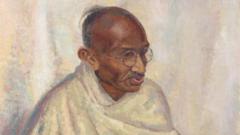In a noteworthy shift this week, street performers have been prohibited from showcasing their talents in Leicester Square, a cherished location for tourists and local artists alike. The Westminster City Council enacted the ban following a court ruling that labeled street performances as a “nuisance,” attributing the repetitive noise to forms of "psychological torture.” This legal decision came after complaints from Global, a media firm located nearby, which argued that the noise from buskers disrupted the productivity of their office workers, often forcing them to find quieter spots to conduct phone calls.
**Leicester Square Busking Ban: A Controversial Decision in London's Cultural Landscape**

**Leicester Square Busking Ban: A Controversial Decision in London's Cultural Landscape**
Authorities in London’s Leicester Square have banned street performances amid noise complaints, igniting debate over cultural expression versus public peace.
Street performances have long been a staple of urban culture, offering joy and entertainment. However, they remain divisive; while some applaud the vibrant atmosphere they create, others find them disruptive to their day-to-day life. The empty spaces where buskers once gathered in Leicester Square stand as a visible testament to this fresh controversy, drawing mixed reactions from the public.
Among those relieved by the ban is Abu Khan, a local convenience store employee who noted the music’s volume often made it hard for him to hear his customers. Conversely, performers and supporters of street art have expressed disappointment, fearing the ban may stifle creative expressions that add unique character to the city.
As the debate unfolds, it raises broader questions about the balance between cultural expression and community needs—an ongoing conversation in many urban centers around the globe. The implications of this decision could resonate beyond Leicester Square, influencing how cities manage public performance in busy, populated areas.
In summary, the ban on busking in Leicester Square, pushed mainly by noise complaints, reflects growing tensions between local interests and cultural practices, highlighting the need for frameworks that can accommodate both sides in urban settings.
Among those relieved by the ban is Abu Khan, a local convenience store employee who noted the music’s volume often made it hard for him to hear his customers. Conversely, performers and supporters of street art have expressed disappointment, fearing the ban may stifle creative expressions that add unique character to the city.
As the debate unfolds, it raises broader questions about the balance between cultural expression and community needs—an ongoing conversation in many urban centers around the globe. The implications of this decision could resonate beyond Leicester Square, influencing how cities manage public performance in busy, populated areas.
In summary, the ban on busking in Leicester Square, pushed mainly by noise complaints, reflects growing tensions between local interests and cultural practices, highlighting the need for frameworks that can accommodate both sides in urban settings.






















